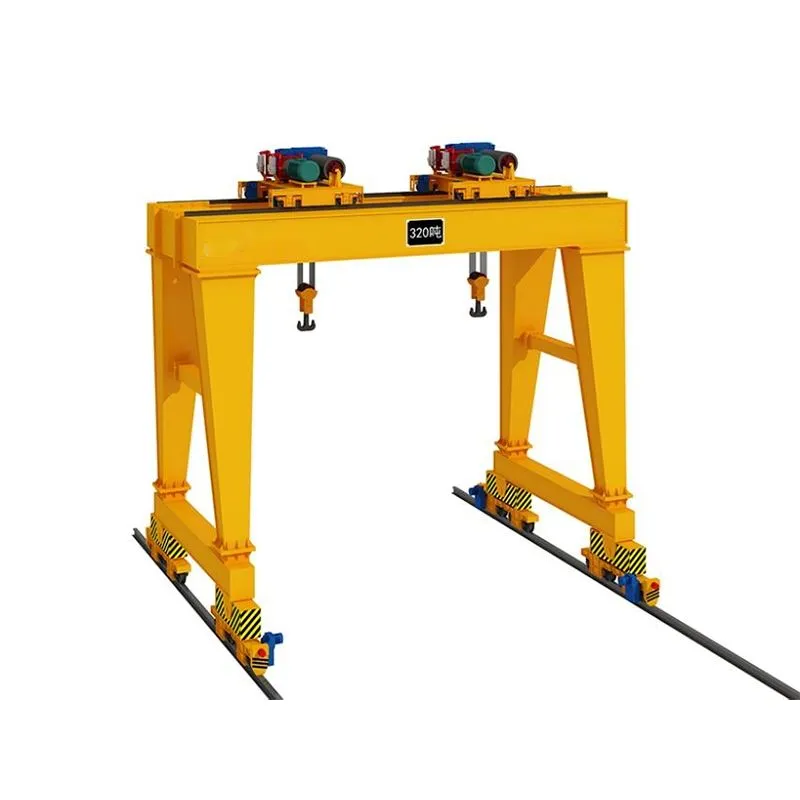Industry Cranes: Powering the Heavy Lifting in Modern Manufacturing
2024-10-23
In today’s fast-paced industrial world, cranes are the unsung heroes that enable large-scale operations to run smoothly. Whether in construction, manufacturing, shipping, or warehousing, industry cranes play a pivotal role in moving heavy loads efficiently, reducing labor, and ensuring safety. In this blog, we’ll explore what industrial cranes are, the various types, their applications, and how they are revolutionizing industries globally.
What is an Industry Crane?
An industrial crane is a machine used to lift, lower, and transport heavy objects from one place to another. Unlike mobile cranes, which are used primarily in outdoor construction, industry cranes are often stationary or semi-mobile systems used within factories, warehouses, and shipping yards. They are designed to handle large, bulky materials with precision, improving workflow and operational efficiency.
Types of Industrial Cranes
There are several types of cranes used in industrial settings, each designed for specific tasks and operational environments. Here are some of the most common types:
1. Overhead (Bridge) Cranes
An overhead crane, also known as a bridge crane, consists of parallel runways with a traveling bridge spanning the gap. A hoist moves along the bridge to lift and transport materials. Overhead cranes are often used in manufacturing plants and steel mills to move heavy loads across large areas.
- Applications: Steel production, automobile manufacturing, machine shops, and warehousing.
2. Gantry Cranes
A gantry crane is similar to an overhead crane but differs in that it has two legs that support the bridge, which runs on wheels or tracks on the ground. These cranes are ideal for outdoor applications where large structures need to be lifted and moved over a fixed path.
- Applications: Shipyards, container terminals, and large construction sites.
3. Jib Cranes
Jib cranes have a horizontal arm (the jib) that supports a hoist and is either mounted on a wall or floor. These cranes are often used for repetitive lifting tasks in a fixed location and are highly versatile due to their compact size.
- Applications: Assembly lines, workshops, and small industrial facilities.
4. Tower Cranes
Tower cranes are essential in the construction industry for the erection of tall buildings. They are known for their ability to lift heavy loads at great heights. Tower cranes are often fixed to the ground or mounted on the structures being built, allowing them to lift construction materials like steel beams and concrete.
- Applications: Skyscraper construction, bridge building, and large infrastructure projects.
5. Monorail Cranes
Monorail cranes consist of a single rail on which a trolley-mounted hoist moves. These cranes are commonly used in assembly lines, where items need to be transported from one station to another in a fixed direction.
- Applications: Automotive assembly, packaging, and light manufacturing.
Key Advantages of Industry Cranes
1. Efficiency: Industry cranes can move large, heavy materials quickly and efficiently, significantly improving productivity in any industrial setting.
2. Safety: Lifting heavy loads manually can be dangerous. Cranes reduce the risk of injuries by automating the lifting process, providing a safer working environment.
3. Precision: Modern cranes are equipped with advanced control systems that allow for precise movements, essential in applications where materials need to be positioned accurately.
4. Cost-Effectiveness: While cranes require an upfront investment, their ability to handle tasks that would otherwise require several workers or machines makes them cost-effective in the long run.
5. Versatility: From construction to manufacturing, industry cranes can be adapted to perform a wide variety of tasks across different industries.

Applications Across Industries
Industrial cranes are used in a multitude of industries to handle various tasks, including:
- Manufacturing: Moving heavy machinery, raw materials, or finished products across production lines or storage areas.
- Construction: Lifting construction materials such as steel beams, concrete blocks, and other building components.
- Warehousing: Transporting goods within warehouses and loading/unloading trucks.
- Shipping and Ports: Moving large shipping containers from ships to trucks or trains for further transportation.
- Automotive: In automobile factories, cranes are used to lift engines, body parts, and other large components during the assembly process.
- Mining: Cranes are used to move raw materials like ores and coal from one place to another in large-scale mining operations.
Technological Advancements in Industrial Cranes
Modern industry cranes are not just about brute strength—they also incorporate cutting-edge technology to enhance their capabilities:
- Automation and Robotics: Many industrial cranes are now integrated with automated systems, reducing the need for human intervention. Automation can increase precision, repeatability, and safety, making operations more efficient.
- Remote Control and IoT Integration: Wireless remote control systems allow operators to control cranes from a distance, improving safety in hazardous environments. Some cranes are also equipped with IoT (Internet of Things) sensors that provide real-time data on load weight, movement, and wear-and-tear, allowing for predictive maintenance and operational efficiency.
- AI and Machine Learning: AI-powered cranes can optimize lifting routes, predict the best positioning, and even adapt to changing environments, enhancing productivity and reducing the likelihood of accidents.
Safety Considerations for Industrial Cranes
Despite their numerous advantages, the operation of industrial cranes requires stringent safety measures:
- Operator Training: Crane operators must be properly trained and certified to handle the specific type of crane they are using.
- Regular Maintenance: Routine inspections and maintenance are crucial to ensuring that cranes operate safely and efficiently. This includes checking the condition of cables, motors, and other mechanical components.
- Load Limits: Every crane has a maximum load capacity, and exceeding this limit can result in mechanical failure or accidents. Always adhere to the specified load limits.
- Environmental Factors: Weather conditions, such as strong winds, can impact the stability of cranes, especially outdoor gantry and tower cranes. Proper precautions must be taken in adverse conditions.
Conclusion
Industrial cranes are vital components of modern industries, providing the muscle needed for large-scale manufacturing, construction, and logistics. With advancements in automation and technology, cranes are becoming more efficient, precise, and safer to operate. As industries continue to evolve, cranes will remain indispensable tools, helping businesses lift heavier loads and achieve new heights in productivity.
Whether you’re involved in manufacturing, shipping, or construction, understanding the capabilities and types of industrial cranes is key to optimizing your operations and ensuring the safe handling of heavy materials.


